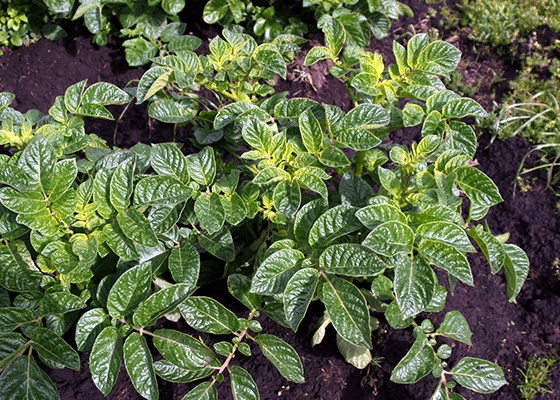The benefits of adding sulfur to a spring nutrition programme shouldn’t be forgotten as growers seek to improve nitrogen efficacy for applications in the coming months.
Farmers may have prioritised securing a supply of straight nitrogen when prices began to rise, but there is still the opportunity to incorporate sulphur into a fertiliser programme to add valuable nutrition to this year’s crops. “Sulphur is an essential nutrient that is key for protein formation and has a direct influence on improving crop quality,” says Tom Oates, nutrition agronomist at Origin Fertilisers.
“Crops with high nitrogen input tend to have increased sulphur requirements as sulphur helps plants use nitrogen more effectively. For most cereals and grass, farmers should be looking to apply 12kg of N to 1kg of S to maximise nitrogen uptake and crop performance, and 6kg of N to 1kg of S for OSR and other brassicas.”
For those who have not yet purchased sufficient supplies of sulphur to support crop growth, Polysulphate could be a versatile and valuable source as it contains no additional nitrogen. With the analysis 48%SO3, 14% K20, 17%CaO, 6%MgO, it could provide crops with their entire sulphur requirement. Since the sulphur in Polysulphate has a prolonged release pattern, growers can apply the product in early spring without the need to ‘top up’ later in the season, as Mr Oates explains.
Released over 5 days
“The sulphur in straight ammonium sulphate is released over five days so is vulnerable to leaching if there is heavy rainfall following application, particularly on sandy soil. Whereas the sulphur in Polysulphate is released over 55 days and so there is a much lower leaching risk, and more sulphur is likely to be taken up by the crop.
| Crop | Sulphur requirement |
| Cereals | 25-50kg SO3/ha |
| OSR | 50-75kg SO3/ha |
| Legumes & sugar beet | 25kg SO3/ha |
| Silage | 40kg SO3/ha before every cut |
“An early application of 100kg/ha of Polysulphate would supply around 48kg of sulphur (as SO3) to the growing crop over the course of the season, enough for most cereal crops according to RB209. Average sulphur applications tend to be at the upper end of RB209 recommendations or higher, and growers will see benefits of applying extra sulphur to the crop.
“It also supplies a small amount of readily available potassium which is useful if farmers have cut back on their usual autumn applications. Small quantities of calcium and magnesium are also included in Polysulphate,” he concludes. Polysulphate is mined in the UK and is certified for organic use and suitable for chloride sensitive crops.
Few people would find reason to criticize efforts to improve air quality. But to some extent, farmers have a legitimate gripe: cleaner air has created nutritional deficiencies in America’s crop fields. Sulfur, specifically. For years, the fumes from power plants carried with them so much sulfur that crops never displayed deficiencies. Much like another vital input in crop production — sunlight — we never thought to supplement it because there was always enough. Sulfur became the ‘invisible’ macronutrient.

Now that we recognize the effects of burning fossil fuels — acid rain, particulates, excess carbon dioxide — it’s right to clean up and reduce emissions; no-one wants to repeal the Clean Air Act. But as so often happens, the law of unintended consequences has exerted itself: our soils no longer receive the annual sulfur ‘bounty’. EPA data shows sulfur emissions fell 94 percent between 1990 and 2019. Farmers must make up for the sulfur deposits they previously enjoyed ‘for free’. As successive crops take their fill, many fields now run a sulfur deficit.
Why is sulfur so important?
It’s the ‘fourth macronutrient’. Whatever the crop, sulfur’s role in crop biochemistry can’t be ignored. Of similar importance to nitrogen or phosphorus, it supports plant functions that can affect yield, quality and marketability.

Potatoes demand adequate sulfur levels for nitrogen uptake, chlorophyll production, tuber development, stress and pest resistance, carbohydrate generation, amino acid formation and vitamin synthesis. Decreased efficiency in any area becomes a limiting factor on crop yield and potential, while it also plays a significant role in how crops taste and smell, and how they perform in subsequent use. For example, the all-important gluten in wheat — giving bread its chewy, soft texture — depends on sulfur-sulfur bonds. Good breadmaking wheat needs good sulfur.
What’s more, across all crops, sulfur deficiencies rarely present with visible symptoms. Hidden deficiency is often more damaging than acute deficiency, as it’s usually only discovered when it’s too late to remedy. Sulfur also has another role, as a fungicide. Indeed, sulfur-based fungicides were amongst the first available to farmers and they remain important today, whether applied to cut seed or as a supplement in conjunction with modern blight control chemistry.
What’s the solution?
It’s important to understand how plants absorb sulfur. Their preference is for sulfates: this is the only form in which plant roots can access the nutrient. There’s a limited role for leaves: not only can they absorb small quantities of sulfur dioxide direct from the atmosphere, they also help to regulate nutrient absorption while combating disease.

When applied as a foliar spray, the nutrients slowly enter the plant tissue as required. But when present on the leaf surface, sulfur’s disease-suppressing abilities act in synergy with later applications of fungicide and insecticide. So a healthy plant can stave off infections itself, putting less strain on modern fungicides within the program and reducing the risk of fungicide resistance. It’s no coincidence that the incidence of diseases such as blight increases where potato plants display even moderate sulfur deficiency. Yet during the growing season, a crop’s sulfur requirements can often greatly exceed the soil’s inherent capacity to supply it — particularly as levels are now in decline.

